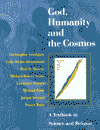The Remarkable Uniformity of the Universe
One of the remarkable features of the universe is that above a certain scale
(about 1024 metres) it is highly uniform in structure. However, this degree of
uniformity is an embarrassment to cosmologists.
According to relativity theory, there should be no causal connection between
points separated by distances greater than c multiplied by t (where c is the
velocity of light and t is the age of the universe). Extrapolating this back to
the Big Bang suggests that the primordial universe was partitioned into about
1080 causally separate regions.![[FTEXT]](../stdart/fn.gif) Nevertheless, all these disconnected
regions had to expand at the same rate to maintain the observed degree of
uniformity! Coincidence or co-operation? Small wonder that Paul Davies
comments: Nevertheless, all these disconnected
regions had to expand at the same rate to maintain the observed degree of
uniformity! Coincidence or co-operation? Small wonder that Paul Davies
comments:
It is hard to resist the
impression of something - some influence capable of transcending spacetime and
the confinement of relativistic causality - possessing an overview of the
entire cosmos at the instant of its creation, and manipulating all the causally
disconnected parts to go bang with almost exactly the same vigour at the same
time, and yet not so exactly co-ordinated as to preclude the small scale,
slight irregularities that eventually formed the galaxies, and us.![[FTEXT]](../stdart/fn.gif)
Davies’ reference to small-scale irregularities highlights another feature
of cosmic uniformity. According to current theories, galaxy formation depends
upon the existence of small initial irregularities in the Big Bang itself.
These are amplified by cosmic expansion to the point where gravitation can
begin the process of stellar condensation.![[FTEXT]](../stdart/fn.gif) If the initial irregularities
are too large the result is the rapid and widespread formation of black holes
instead of stars. If the initial irregularities are sufficiently small, the
precise expansion rate of the cosmos becomes critical - too rapid and the
irregularities will not be amplified enough for galaxy formation to occur; too
slow and the cosmos will be closed with a lifetime too short to permit
biological evolution. If the initial irregularities
are too large the result is the rapid and widespread formation of black holes
instead of stars. If the initial irregularities are sufficiently small, the
precise expansion rate of the cosmos becomes critical - too rapid and the
irregularities will not be amplified enough for galaxy formation to occur; too
slow and the cosmos will be closed with a lifetime too short to permit
biological evolution.
Email
link | Feedback |
Contributed by: Dr. Christopher Southgate
Source: God, Humanity and the
Cosmos (T&T Clark, 1999)
|




